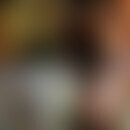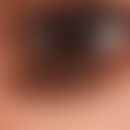DefinitionThis section has been translated automatically.
Epidermolysis bullosa dystrophica, also known as dystrophic epidermolysis bullosa (DEB), is a genetic skin disease that affects the skin and nails, and less commonly, mucous membranes. It usually appears clinically at birth. The lesions heal with, in some cases, mutilating scarring. EBD is divided into two main groups depending on the pattern of inheritance:
- Recessive (autosomal-recessive) Epidermolysis bullosa dystrophica (RDEB).
- Dominant(autosomal-dominant) Epidermolysis bullosa dystrophica (DDEB).
Each type is further subdivided into several clinical subtypes. The absence of a known family history of epidermolysis bullosa dystrophica does not exclude the diagnosis (Fine JD 2016).
ClinicThis section has been translated automatically.
Clinical findings in severe generalized autosomal recessive EBD (REBD) include fragility of the skin manifested by blistering even with minimal trauma and healing with milia and scarring. EB melanocyticnevi occur in all forms of EB dystrophica.
Blistering and formation of extensive erosions may occur as early as the neonatal period. They tend to heal markedly poorly, sometimes with formation of exuberantgranulation tissue. Involvement of the oral mucosa can lead to blistering, poorly healing wounds with potential synechiae and extensive adhesions of the tongue and floor of the mouth, which can ultimately lead to progressive reduction of the size of the oral cavity. Erosions of the esophagus can lead to bar formation and strictures. The result is dysphagia of varying severity. This can lead to malnutrition and vitamin and mineral deficiencies in young children, which in turn can result in growth disorders. Corneal erosions with consecutive scarring may cause loss of vision. Scarring blisters on hands and feet, lead to contractures and pseudosyndactyly. Aggressive squamous cell carcinoma is another complication. The lifetime risk for aggressive squamous cell carcinoma is over 90%.
In contrast to severe and generalized REBD, blistering may be localized in the less severe forms of REBD. The mechanically stressed skin areas, the hands, feet, knees and elbows are preferentially affected, with or without involvement of the flexor sides and trunk, but without mutilating scarring.
In autosomal dominant inherited DEBD (dominant dystrophic epidermolysis), blistering is often mild and limited to the hands, feet, knees and elbows. Scarring also occurs in this type (as a result of dermolytic blistering). Finger and toe nails are often affected. They may be the only manifestation of DDEB ("nails only").
You might also be interested in
LaboratoryThis section has been translated automatically.
When phenotypic and laboratory findings suggest a diagnosis of DEB, molecular genetic testing approaches may include single-gene testing or the use of a multigene panel:
- Single gene testing. Sequence analysis of COL7A1 detects small intragenic deletions/insertions as well as missense, nonsense, and splice site variants; typically, exon or whole-gene deletions/duplications are not detected. In this respect, it is recommended to perform a sequence analysis first. If no pathogenic variant is found or if only a single pathogenic variant is identified in an individual suspected of having recessive DEB, perform targeted gene deletion/duplication analysis to detect intragenic deletions or duplications.
- An epidermolysis bullosa multigene panel that includes COL7A1 and other genes of interest is most likely to identify the genetic cause of the disease at a reasonable cost while limiting the identification of variants of unclear significance and pathogenic variants in genes that do not explain the underlying phenotype.
Note: The genes included in the panel and the diagnostic sensitivity of the tests used for each gene vary by laboratory and are likely to change over time. Some multigene panels may include genes that are not associated with the disease discussed in this GeneReview. In some laboratories, panel options may include a laboratory-designed panel and/or phenotype-focused exome analysis that includes physician-specified genes. Methods used in a panel may include sequence analysis, deletion/duplication analysis, and/or other non-sequencing based tests. A multigene panel that includes deletion/duplication analysis is recommended for this condition.
HistologyThis section has been translated automatically.
Characteristic histologic findings:
- Staining for collagen VII with antibody is decreased or absent.
- In milder forms of RDEB and in DDEB, staining for collagen VII may appear normal, but cleavage planes are below the lamina densa.
- Normal staining for other antigens (e.g., laminin 332, collagen XVII, plectin, α6β4-integrin, and keratins 5 and 14) helps confirm the diagnosis of DEB.
Transmission electron microscopy (TEM):
In milder forms of EB, direct IF studies are often insufficient to make the diagnosis because near-normal antigen concentrations can be detected and no cleavage plane is observed. In such cases, TEM examination of the skin biopsy may be helpful to examine the cellular structures (Eady RA et al 2010).
Characteristic EM findings:
-All EBD: Cleavage is observed below the lamina densa of the basement membrane zone.
-Recessive EBD severely generalized: Anchoring fibrils are markedly reduced, absent, or abnormal in morphology.
-Dominant EBD, REBD-gen. and -localized: Anchoring fibrils may appear reduced in number and/or have altered morphology. Intracellular retention of collagen VII may be observed in some individuals. In some individuals with transient blistering in the neonatal period, collagen VII may be retained intracellularly in basal keratinocytes rather than being transported to the basement membrane zone.
DiagnosisThis section has been translated automatically.
The diagnosis is based on clinical findings, family history and various diagnostic tests. Molecular genetic analysis is the most reliable test procedure. Direct immunofluorescence (IF) and/or transmission electron microscopy (EM) of lesional skin are particularly helpful in classifying subtypes.
Dystrophic epidermolysis bullosa is suspected in the following clinical findings:
-Brittleness of the skin, manifested by blistering with minimal trauma, which heals with milia and scarring. Blistering and erosions:
- are already present in the neonatal period
- occur generalized all over the body including the mucous membranes (most severe forms) or only localized mainly on hands, feet, knees and elbows (milder forms).
- Lead to mutilating pseudosyndactyly of the hands and feet (severe forms)
- Lead to scarring and strictures in the mouth and/or esophagus
- Lead to corneal erosions with resultant scarring leading to loss of vision
- Predispose to squamous cell carcinoma
- Lead to dystrophic or missing nails, especially toenails
-family history indicating either autosomal recessive or autosomal dominant inheritance.
-Molecular genetic testing: depending on the phenotype, this can be ensured by a combination of targeted genetic testing (single gene testing, simultaneous or serial single gene testing, multigene panel) and comprehensive genomic testing (chromosomal microarray analysis, exome sequencing, exome array, genome sequencing). The genetic tests must determine which gene(s) is likely to be involved (biallelic pathogenic variant (REBD) or a heterozygous pathogenic variant (DEBD) in COL7A1), whereas this is not required for the genomic tests. As the phenotype of EBD is highly variable, individuals with the findings described above are likely to be diagnosed using targeted genetic testing. Individuals with an unclear phenotype are more likely to be diagnosed using genomic testing. DEB is diagnosed in a subject with characteristic clinical and molecular genetic findings.
If a molecular genetic test is not diagnostic, examination of a skin biopsy with direct IF for specific cutaneous markers and/or EM may be required. Routine histology is not recommended.
TherapyThis section has been translated automatically.
At the end of April 2025, Vyjuvek®, a gel, was approved for external therapy for the treatment of wounds in patients with dystrophic epidermolysis bullosa: see External therapy.
New blisters should be lanced, deflated and in most cases dressed with a non-adherent material, covered with padding for stability and protection and secured with an elastic bandage. In infants and children with severe generalized RDEB and poor growth, attention must be paid to fluid and electrolyte balance and nutritional support may be required, including gastrostomy.
Anemia: iron supplements; transfusions if needed.
Other supplements may include calcium, vitamin D, selenium, carnitine and zinc.
Specific and professional occupational therapy is useful to prevent contractures of the hand. Surgical removal of the pseudosyndactylia. May need to be repeated.
External therapyThis section has been translated automatically.
At the end of April 2025, Vyjuvek®, a gel for the treatment of wounds in patients with dystrophic epidermolysis bullosa, was approved. It is applied once a week to fresh wounds until they heal. Dystrophic epidermolysis bullosa is caused by a mutation in the COL7A1 gene, which prevents the skin cells from producing collagen type VII (COL7).
The active ingredient of Vyjuvek®, Beremagene geperpavec, consists of a non-integrating and non-replicating herpes simplex 1 virus vector containing the COL7A1 gene. This repetitive gene therapy enables keratinocytes and fibroblasts to synthesize functional type VII collagen. In the pivotal study (Guide SV et al. 2022), significantly more wounds healed and remained closed for longer than with placebo. The external therapy can be carried out without any problems "at home" by those affected or by caring relatives.
ProphylaxisThis section has been translated automatically.
Prevention of primary manifestations:
Pregnancy: in an affected fetus, delivery by sectio may reduce trauma to the skin during birth.
Age-appropriate play with activities that cause minimal trauma to the skin should be encouraged.
Dressings and padding are required to protect bony prominences from blistering impacts.
Surveillance: Beginning in the second decade of life, abnormal, poorly healing wounds should be biopsied for evidence of squamous cell carcinoma (Mellerio JE et al 2016).
Recommended regular examinations include screening for anemia and deficiencies of iron, zinc, vitamin D, selenium, and carnitine every 6-12 months.
Annual echocardiograms to detect dilated cardiomyopathy and bone mineral density examinations to detect osteoporosis are recommended.
Avoid ill-fitting or coarse-mesh clothing and footwear and activities/bandages that traumatize the skin.
Assessment of at-risk relatives: It is useful to assess an at-risk newborn for signs of blistering so that trauma to the skin is avoided as much as possible.
Genetic counseling: Dystrophic epidermolysis bullosa is inherited in either an autosomal dominant (DEBD) or autosomal recessive (REBD) manner. Molecular characterization of the pathogenic variants is the only accurate method to determine the mode of inheritance and risk of recurrence; phenotype severity and IF/EM findings alone are not sufficient.
- DEBD. Approximately 70% of individuals diagnosed with an autosomal dominant form of dystrophic epidermolysis bullosa usually have an affected parent. If one parent is affected, the risk for siblings is 50%. Each child of a person with DDEB has a 50% chance of inheriting the pathogenic variant.
- REBD. Each sibling of an affected person whose parents are both carriers has a 25% chance of being affected at conception, a 50% chance of being an asymptomatic carrier, and a 25% chance of being unaffected and not a carrier.
Regulative therapyThis section has been translated automatically.
Once the pathogenic COL7A1 variant(s) have been found, prenatal diagnostics should be performed
Note(s)This section has been translated automatically.
If the phenotype cannot be clearly assigned, comprehensive genomic testing (which does not need to determine which genes are likely involved) is the best option. Exome sequencing is most commonly used; genome sequencing is also possible (Pfendner EG 2015).
LiteratureThis section has been translated automatically.
- Almaani N et al. (2011) Identical glycine substitution mutations in type VII collagen may underlie both dominant and recessive forms of dystrophic epidermolysis bullosa. Acta Derm Venereol 91:262-266.
- Almaani N et al. (2010) Genitourinary tract involvement in epidermolysis bullosa. Dermatol Clin 28:343-346.
- Bale S et al. (2014) Exome "slice" sequencing: an alternative to sequential gene sequencing in epidermolysis bullosa (EB). Abstract 485. Nashville, TN: American College of Medical Genetics Annual Clinical Genetics Meeting. 2014.
- Eady RA et al. (2010) Transmission electron microscopy for the diagnosis of epidermolysis bullosa. Dermatol Clin. 2010;28:211-222.
- Fine JD (2016) Epidemiology of inherited epidermolysis bullosa based on incidence and prevalence estimates from the national epidermolysis bullosa registry. JAMA Dermatol 152:1231-1238.
- Fine JD et al. (2014) Inherited epidermolysis bullosa: updated recommendations on diagnosis and classification. J Am Acad Dermatol. 2014;70:1103-1126.
Marinkovich MP et al. (2025) Long-Term Safety and Tolerability of Beremagene Geperpavec-svdt (B-VEC) in an Open-Label Extension Study of Patients with Dystrophic Epidermolysis Bullosa. Am J Clin Dermatol 26:623-635.
- Meester I et al. (2018 ) High concordance between clinical diagnosis of epidermolysis bullosa and immunofluorescence with a small, well-matched antibody panel. Australas J Dermatol. 2018;59:73-76.
- Mellerio JE et al. (2016) Management of cutaneous squamous cell carcinoma in patients with epidermolysis bullosa: best clinical practice guidelines. Br J Dermatol 174:56-67.
- Pfendner EG (2015) Next-generation sequencing: comprehensive genetic testing for epidermolysis bullosa. Br J Dermatol 173:638-639.
- Pfendner E et al. (2017) Exome slice testing for epidermolysis bullosa in a cohort of 260 individuals. Pediatr Dermatol 34:S1.
- Pfendner E et al. (2001) Epidermolysis bullosa carrier frequencies in the US population. J Invest Dermatol 116:483-484.
- Pohla-Gubo G et al. (2010) Immunofluorescence mapping for the diagnosis of epidermolysis bullosa. Dermatol Clin. 2010;28:201-210.
Incoming links (4)
Epidermolysis bullosa dystrophica dominans, generalized; Epidermolysis bullosa dystrophica recessive, severe generalized; Ichthyosis x-linked recessive; STS Gene;Outgoing links (13)
Beremagen geperpavec; Dystrophic epidermolysis bullosa pruriginosa recessive; Epidermolysis bullosa dystrophica albopapuloida; Epidermolysis bullosa dystrophica dominans, generalized; Epidermolysis bullosa dystrophica praetibialis; Epidermolysis bullosa dystrophica recessive non-hallopeau-siemens; Epidermolysis bullosa dystrophica recessive, severe generalized; Epidermolysis bullosa with congenital abscence of the skin and deformity of nails; Isolated toenail dystrophy; Nevus melanocytic (overview); ... Show allDisclaimer
Please ask your physician for a reliable diagnosis. This website is only meant as a reference.







